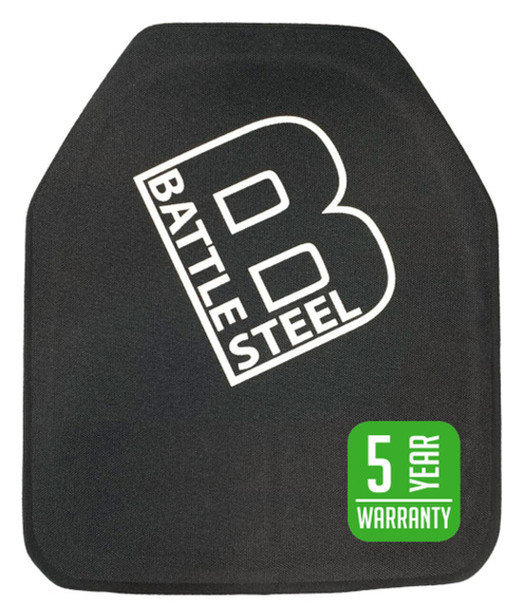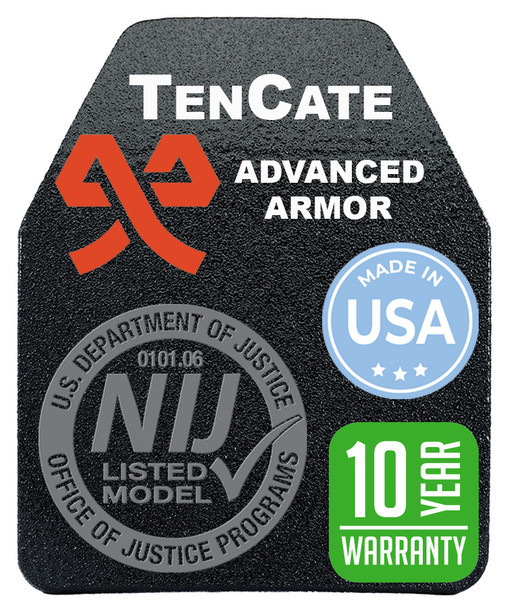What Are the Different Types of Body Armor?
What Are the Different Types of Body Armor?
With abundance of body armor models available on the market today, it can be quite a problem to pick the best one for you. Do you need ceramic or steel body armor? What’s the difference between Level III and Level IIIa protection? In this article, we explain what are different type of body armor and how to select one.
Body Armor Protection Levels
The protection level of a ballistic armor is standardized and is certified based on the NIJ Standard 0101.06. The Standard describes the following levels of protection:
- Level IIA. The body armor certified as Level II reliably protects against 9mm FMJ RN; .40 Smith and Wesson (S&W) FMJ, and other similar ammo. Level IIA is considered a light armor type.
- Level II. If the ballistic armor is certified as Level II it can stop more energetic pistol rounds as well. Typical examples of ammo a Level II armor can protect against include 9mm FMJ RN or .357Magnum JSP. Level II armor is considered a light armor type too.
- Level IIIA. This level of protection is guaranteed to stop .357 SIGFMJ FN and .44 Magnum SJHP bullets. Level IIIA is a common choice, because it reliably protects against all normal firearms that are commercially available.
- Level III. Now, here comes some serious protection. Level III armor protects against 7.62mm FMJ (M80) and some other similar rifle shots. Surely, it offers protection of the lower levels too.
- Level IV. The most reliable protection designed to stop high-velocity bullets. Level IV armor vest can stop rounds of .30 Cal AP (M2 AP) as an example.
What is body armor made of?
Ballistic armor is made of various materials, each one having its own advantages and disadvantages. Here is a brief review of common materials.
AR500 steel body armor
Steel armor is an affordable yet moderately effective material. AR500 is one of the most common steel grades used to manufacture body armor plates. It is hard, it is affordable, and it does not require any maintenance. At the same time, AR500 steel body armor delivers decent protection against pistol bullets of all common types.
Advantages of steel:
- Cheapness. Historically the first, steel is the most affordable of the body armor materials.
- Simplicity. You don’t need to take special care of a steel armor plate. It is… well… a plate of metal, nothing more. Keep it in a dry place and you are done.
- Multi-hit ready. Each hit deforms the steel plate, but it steel retains its stopping power, at least partially.
Disadvantages of steel:
- Hardness. Steel is hard to deform. This means it dissipates the energy of the hit only partially. This may result in traumas and injuries including broken ribs and hematomas.
- Less comfortable. Steel is rigid, so it does not feel very comfortable on your body. If you job requires constant armor wearing, you may prefer some light and more flexible options.
- Heavy. Steel body armor may hinder your mobility, and mobility can be vital.
- Fails to AP rounds. Steel armor does not stop any armor-piercing rounds as well as higher velocity rifle bullets.
Ceramic body armor
The ceramic armor is extremely hard, but fragile. The combination of two makes a perfect defense, actually. The bullet hits the armor, and the protective layers get damaged and thus dissipate the energy of the bullet across the entire volume of the armor.
Advantages of ceramic armor:
- High protection. Some examples of modern ceramic are hard as hell. They can withstand literally anything. And that guarantees protection even from AP rounds. Ceramic also absorbs energy better.
- Lightweight. Ceramic armor weights half the steel armor and protects better.
Disadvantages:
- Fragile. Ceramic is prone to mechanical damages, so dropping it is not recommended.
- Bulky. Ceramic armor plates can seriously hinder mobility of an armor wearer.
- Costly. This type of armor can be really expensive.
UHMWPE body armor
Ultra high molecular weight polyethylene or UHMWPE is a synthetic material that is very different from the household polyethylene you can see all around. High molecular density of this material makes it extremely hard to tear. Multiple layers of such material effectively stop even high-energy bullets and dissipate the energy of the impact.
Advantages of polyethylene armor:
- Extremely lightweight. UHMWPE ballistic armor is the lightest armor of all currently available on the market.
- Good stopping power.
- Comfortable to wear.
- Does not need special maintenance.
Disadvantages:
- Rather expensive
- Can be bulky if offers a high protection level.
Composite armor
Synthetic fibers such as Kevlar are often used as a basis from composite body armors that include several layers of different materials: ceramic, steel, synthetic fibers and so on. Such composite armors can be utterly effective and demonstrate excellent capabilities as well as cost-effectiveness.
Conclusion
Which level of protection and material should you select? This mostly depends on your goals and duties. The rule of thumb: the higher the protection level is, the heavier and bulkier is the armor. Lightweight armors are OK against pistol threats, and allow for better mobility of the wearer. At the same time, you should definitely consider potential dangers the body armor must protect you against.
If you are not sure what type of the body armor you need, please don’t hesitate to contact a consultant for a professional advice.
Recent Posts
-
Understanding Ballistic Shield Ratings and Their Applications
The Trusted Name in Tactical Defense - BattleSteel® When it comes to protecting those who protec …2025-04-19 -
The Importance of Hearing Protection in Tactical Environments
The Legacy of BattleSteel® BattleSteel® is a trusted name in the world of tactical defense e …2025-04-14 -
How to Properly Fit and Wear a Plate Carrier
About BattleSteel and Their Mission BattleSteel is a trusted name in the tactical gear industry, ren …2025-04-11




